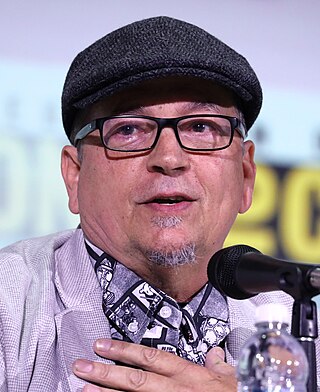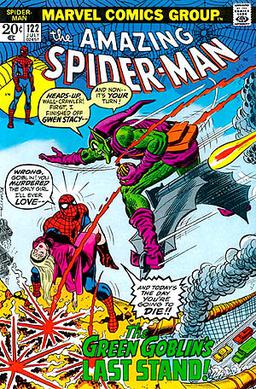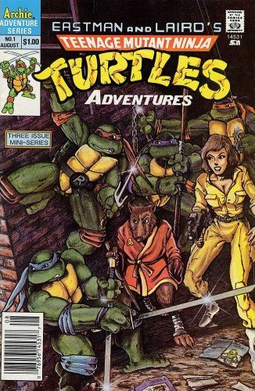Teenage Mutant Ninja Turtles, commonly abbreviated as TMNT, is a media franchise created by the comic book artists Kevin Eastman and Peter Laird. It follows Leonardo, Donatello, Raphael and Michelangelo, four anthropomorphic turtle brothers trained in ninjutsu who fight evil in New York City. The franchise encompasses printed media, television series', feature films, video games, and merchandise.

Usagi Yojimbo is a comic book series created by Stan Sakai. It is set primarily at the beginning of the Edo period of Japanese history and features anthropomorphic animals replacing humans. The main character is a rabbit rōnin, Miyamoto Usagi, whom Sakai based partially on the famous swordsman Miyamoto Musashi. Usagi wanders the land on a musha shugyō, occasionally selling his services as a bodyguard.

Alternative comics or independent comics cover a range of American comics that have appeared since the 1980s, following the underground comix movement of the late 1960s and early 1970s. Alternative comics present an alternative to mainstream superhero comics which in the past have dominated the American comic book industry. They span across a wide range of genres, artistic styles, and subjects.

Kevin Brooks Eastman is an American comic book writer and artist. He is best known for co-creating the Teenage Mutant Ninja Turtles with Peter Laird. Eastman was also formerly the editor and publisher of the magazine Heavy Metal.

Mike Dringenberg is an American comics artist best known for his work on DC Comics/Vertigo's Sandman series with writer Neil Gaiman.

Adolescent Radioactive Black Belt Hamsters is a creator-owned American funny-animal parody comic book series created by Don Chin. It was one of a number of parodies of Mirage Studios' hit Teenage Mutant Ninja Turtles series, itself a parody of popular eighties comics such as Frank Miller's Daredevil and Ronin; others included Naive Inter-Dimensional Commando Koalas and Pre-Teen Dirty-Gene Kung-Fu Kangaroos.

Michael Zulli was an American artist known for his work as an animal and wildlife illustrator and as a comic book illustrator. Best known for his work on the Sandman.

Teenage Mutant Ninja Turtles & Other Strangeness is a role-playing game based on the comic book created by Kevin Eastman and Peter Laird. The core rulebook was first published by Palladium Books in September 1985 – before the Turtles franchise achieved mass popularity – and featured original comic strips and illustrations by Eastman and Laird. The rules and gameplay are based on Palladium's Megaversal system.

The Bronze Age of Comic Books is an informal name for a period in the history of American superhero comic books, usually said to run from 1970 to 1985. It follows the Silver Age of Comic Books and is followed by the Modern Age of Comic Books.

Teenage Mutant Ninja Turtles Adventures is an American comic book series that was published from August 1988 to October 1995 by Archie Comics. The series, which was aimed at a younger audience than other Teenage Mutant Ninja Turtles comics at the time, ran for 72 issues. In addition, there were numerous annuals, specials, and miniseries.

Teenage Mutant Ninja Turtles (TMNT) is a comic book series that was published by Mirage Studios between 1984 and 2014. Conceived by Kevin Eastman and Peter Laird, it was initially intended as a one-shot, but due to its popularity it became an ongoing series. The comic created the Turtles franchise of five television series, seven feature films, numerous video games, and a range of toys and merchandise.

Ryan Brown is a comic book writer and artist and toy designer best known for his work on Teenage Mutant Ninja Turtles and the animated series Wild West C.O.W.-Boys of Moo Mesa.
Stephen Murphy is an American comic book writer and editor known for his work on the Teenage Mutant Ninja Turtles series. With Michael Zulli, he was co-creator of the critically acclaimed 1980s independent comic The Puma Blues.
This article lists major events in the field of comics during the 1980s.
Keith Champagne is an American comic artist, who has also moved into writing, and is known for his work at DC Comics.
Wing or Wings, in comics, may refer to:
Sophie Campbell is a comic writer and artist known for her indie comics such as Wet Moon and Shadoweyes, and for her art on the Jem and the Holograms comics, as well as IDW Publishing's ongoing Teenage Mutant Ninja Turtles comic book series. She primarily writes and draws characters who are adolescent or young adult women, including various races, body types, sexual orientations, and abilities. In 2019, she became the lead writer of IDW's Teenage Mutant Ninja Turtles, for which she designed the character Jennika.
The Image Universe (IU) is a fictional universe in which some of the stories published by Image Comics take place. It was introduced in the early years of the publisher, shared by the various creators who formed the Image partnership. The independent, creator-owned nature of their work led to limited interaction between their characters, and little coordination of the Image Universe as a shared setting, with the primary versions populated by a number of superheroes/villains, including Supreme, Invincible, Omni-Man, Spawn, Angela, Atom Eve, the Savage Dragon, Gert, Bomb Queen, and Witchblade, as well as incarnations of the Teenage Mutant Ninja Turtles.
Mirage Studios was an American comic book company founded in 1983 by Kevin Eastman and Peter Laird in Dover, New Hampshire. The company was best known for the Teenage Mutant Ninja Turtles (TMNT) comic book series and the subsequent franchise it has spawned.










